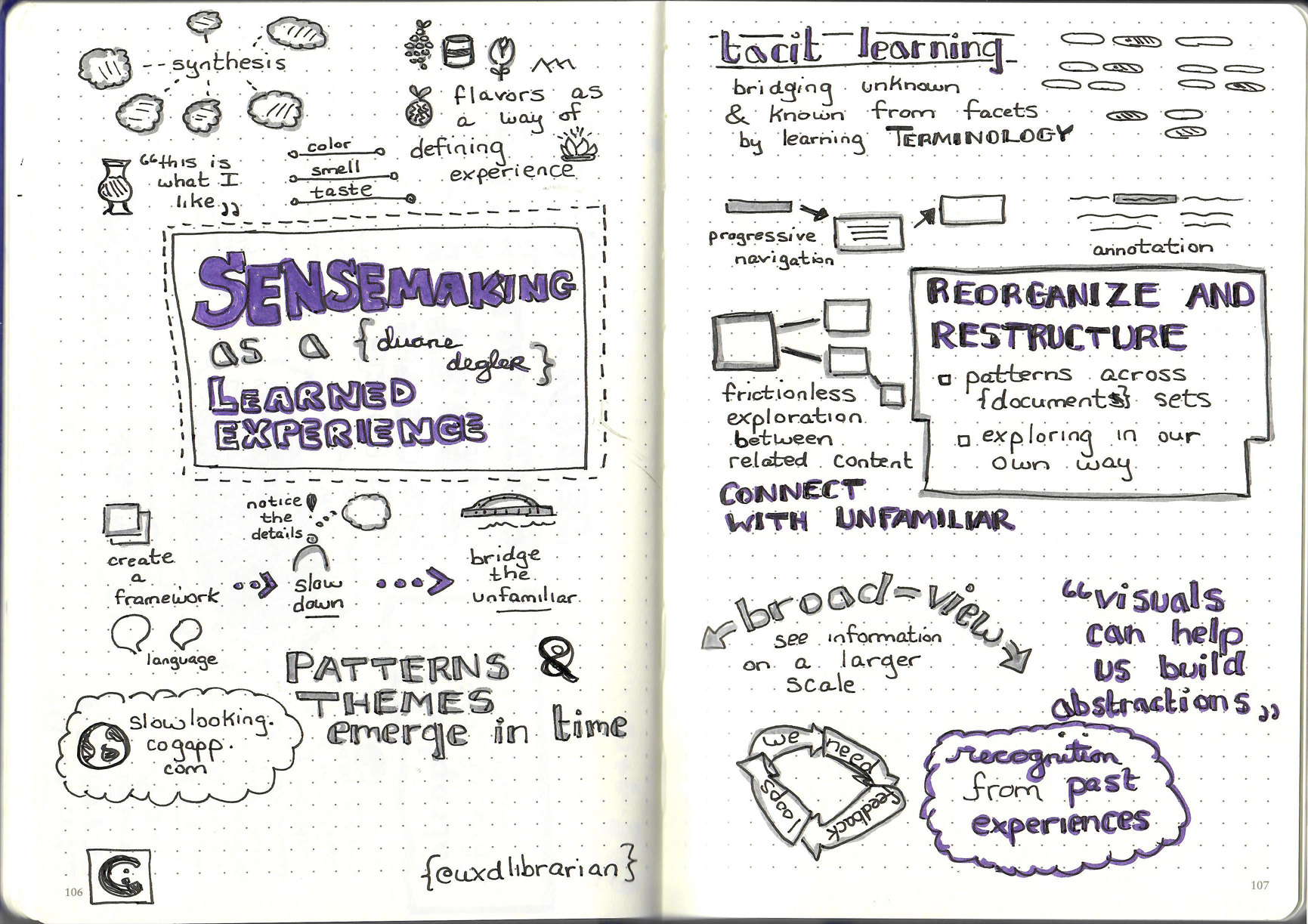Sketchnote by Nathan Rogers, @uxdlibrarian

Human ability to “make sense” in both sensory and information experiences is learned, then developed through attention and practice over time. It involves acquiring concepts that help us understand and organize our experiences, where language guides and deepens future experiences. IA/design provides clues and patterns that align new experiences with our existing knowledge, helping us wayfind through information spaces and needs.
This talk guides IAs, designers, and developers toward creating supportive environments for sensemaking. It outlines the role of language, symbols, structure, and tools that help us make sense of our interactions with information. It is a journey through aspects of sensemaking in three parts, helping us think about the ways we can co-design experiences and emergent understanding with our users.
Key takeaways from the session:
- Insights into how people “make sense” and form a language around their experiences.
- The role that language and structure play to help people deepen their attention, awareness and sensitivity of a physical or informational experience.
- Architectures and design approaches that reinforce learning and sensemaking.
- How to plan for the information environment itself to sense-make; recognizing a user’s intent and language models in order to reinforce the user’s discovery, information use, and overall experience.

